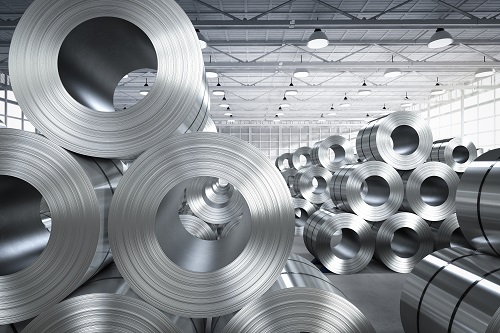What You Need to Know About Steel Surface Preparation
June 24, 2019

If you operate a business such as a warehouse, a factory, or anything that requires sufficient surface preparation, you know how important it is that the work’s done right. Choosing the wrong kind of coating, for example, can bring your work to a halt, resulting in outrageous overages. With 80% of all coating failures being the result of inadequate surface preparation, you’ll need to make sure that great care is provided throughout every step of the surface installation process. This is particularly true when it comes to seeking out surface preparation contractors in New England for preparing your business’ steel surfaces. To make sure everything is taken care of in a timely, safe, and efficient manner, here are a few things to keep in mind when it comes to steel surface preparation.
Chemical Cleaning
There are several different ways to remove debris, dirt, tar and other unwanted materials from your steel surfaces using commercial cleaners, solvents, or detergents. Each method has varying degrees of effectiveness depending on the type of work you do at your facility. For the removal of dirt and grease, you can rely on pure strength cleaners and degreasers. If alkali is a particular problem, then using a combination of steam cleaning and alkaline cleaning is most useful. If necessary, volatile solvent cleaning can be used, but make sure the area surrounding the surface is well ventilated.
Hand and Power Tool Cleaning
When you need to remove loose mill scale, rust, and deteriorated coatings, utilizing hand tool (SSPC-SP 2) and power tool (SSPC-SP 3) cleaning shows the best results. After first removing debris, grease, etc. through chemical cleaning, use hand or power tools to scrape and chip away at rusted surfaces until the steel surface is free of foreign particles. If the surface is glossy, sand thoroughly to remove all signs of gloss so that the surface is rough in order to maximize adhesion.

Abrasive Blast Cleaning
The most thorough means of cleaning steel before coating is abrasive blast. In fact, some specialized applications require nothing less than the effectiveness which only abrasive blast cleaning can provide. For abrasive blast to work optimally, first all grease, salts, and chemicals need to be removed through chemical cleaning, then remove all weld splatter. After applying one of the several different types of abrasive blasts, vacuum up all remaining dust, grit, and other foreign materials. If necessary, remove with the assistance of compressed air, or a clean brush. Furthermore, it’s imperative that you have the surface coated the same day as they’re blasted. Any delay can allow the area to be contaminated, rendering the cleaning less effective.
Options for Abrasive Blast Cleaning
There are almost as many different types of abrasive blast cleaning as there are applications for steel surfaces. These include white metal blast cleaning (SSPC-SP 5), commercial grade blast cleaning (SSPC-SP 6), brush-off blast cleaning (SSPC-SP 7), near white metal blast cleaning (SSPC-SP 10), and industrial blast cleaning (SSPC- SP 14). The type you or your contractor will choose largely depends on the kind of work you require from your steel surfaces. To be done properly, however, great care must be taken the appropriate types of nozzles, and abrasives to achieve the desired result.
For any questions on the kind of preparation your business’ steel surfaces require, call Advanced Prep Coat, Inc. They’re the experts in steel surface preparation in New England, so contact them today!
Advanced Prep Coat, Inc.
41C Sutton Lane
Worcester, MA 01603
63 School Street
Putnam, CT 06260
800-230-2937
- Connecticut
- Maine
- Massachusetts
- New Hampshire
- New York
- Rhode Island
- Vermont
- and the entire Northeast
